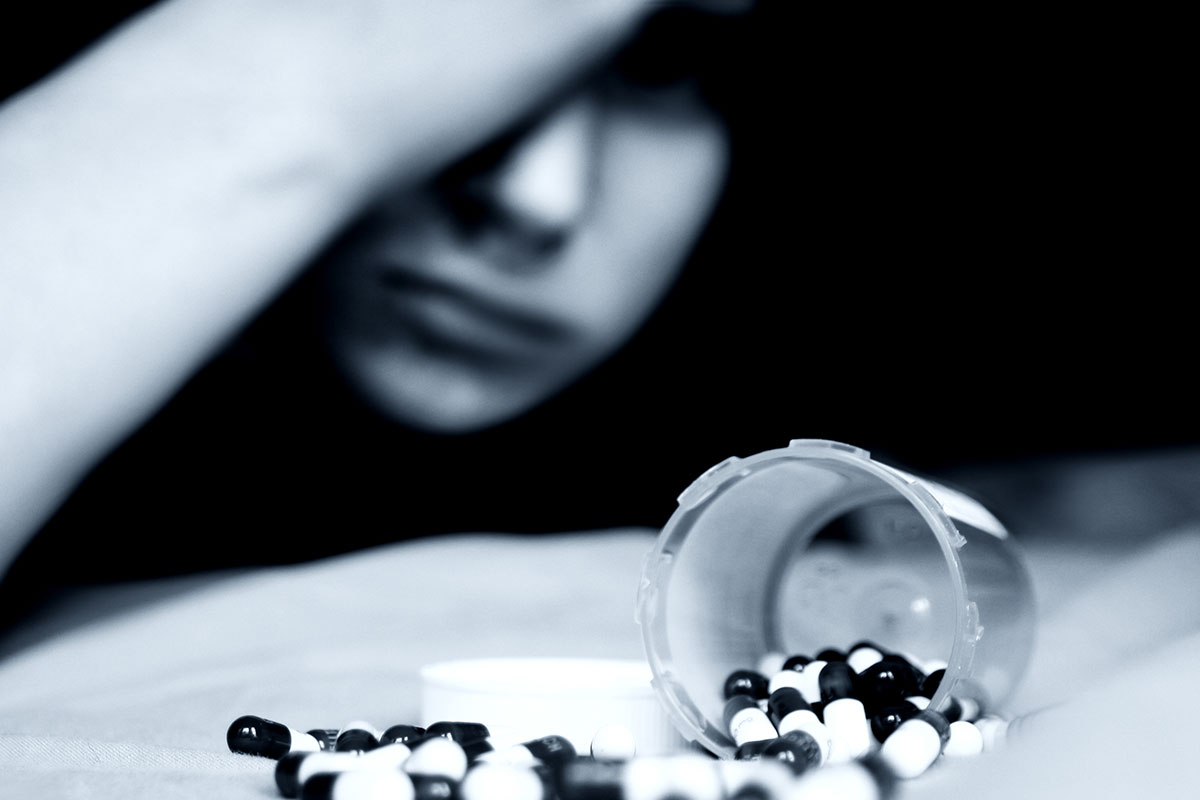Prescription drug misuse, which includes opioid use, is one of the fastest growing drug problems in the United States.1 In 2016, 3.6% of adolescents, ages 12 to 17, reported misusing opioids over the past year.1
Fortunately, opioid use among teens appears to be decreasing but still poses a serious threat.4 According to the 2018 National Survey on Drug Use and Mental Health (2019), 2.8% of adolescents, ages 12 to 17, reported misusing opioids over the past year.3
Opioids and the danger of addiction
Some opioids are legal and may be prescribed by healthcare providers to treat pain; these drugs include oxycodone (OxyContin®), hydrocodone (Vicodin®), codeine, and morphine.4 Use of these prescription drugs for short durations, as prescribed by a doctor, is generally safe. But, other opioids, such as heroin, are illegal. The use of illegal opioids and the misuse of prescription opioids can lead to addiction and even overdose or death.4
Opioid misuse includes taking a drug that has been prescribed for someone else, taking a prescription drug differently than in the manner for which it was prescribed (e.g., at a higher dose, for a longer period of time), or taking a medication with the purpose of getting high.4 When someone misuses opioids, this may indicate opioid dependency or addiction.
How do you become addicted to opioids?
Over time, if one’s body is regularly exposed to opioids, the body becomes used to having the drugs, and the body, or individual, then, feels terrible without the drugs. Withdrawal is like having the flu but much worse, and this reaction can make it difficult for one to stop taking the drug. If an individual begins to seek and take an opioid despite this need causing interference with work, school, or relationships, it is called addiction.2 It’s important to understand that anyone can become addicted to opioids. It doesn’t matter where you live, how educated you are, or what your profession is. In addition, there is no way to predict the likelihood of becoming an addict.2
Solutions to minimize opioid misuse and abuse
- Communication: Talk with your teen about drug misuse and what it means to be a responsible user of prescription drugs. Even though these conversations can be difficult, they are crucial building blocks in your relationship with your teen4 and can help to ensure his or her safety.
- Educate yourself: Remain current on the latest research and parent resources regarding prevention and detection and how to seek help if drug misuse is suspected or has occurred.4 Examples of additional parent resources are listed below.
- Safe medication storage and disposal: Two-thirds of teens who misused pain relievers in the past year say they got the drugs from family and friends, including their home’s medicine cabinets. Therefore, always safeguard medicine in the home by taking an inventory of the prescriptions and checking the inventory frequently or keeping potentially dangerous drugs in a locked box or cabinet.5 Safe storage and disposal of medications diminish opportunities for easy access.5
- Prescription drug monitoring: Advocate for doctors and pharmacies to better monitor how (and how often) drugs are prescribed.5
Do not be afraid to seek help if drug misuse becomes an issue in your home. If you are concerned about opioid misuse, call the Substance Abuse and Mental Health Service’s National Helpline at 1-800-662-HELP (4357) and consult the directory for opioid treatment programs in your area.4
Additional Resources
- Centers for Disease Control and Prevention: https://www.cdc.gov/healthyyouth/substance-use/index.htm
- Substance Abuse and Mental Health Services Administration: https://www.samhsa.gov/find-help/national-helpline
- National Institute on Drug Abuse for Teens: https://teens.drugabuse.gov/parents/helpful-links
- Partnership for Drug-Free Kids: https://drugfree.org/learn/drug-and-alcohol-news/new-parent-helpline-provides-support-resources-for-teen-substance-abuse/
References
- Centers for Disease Control and Prevention. (2017). Drug overdose death data. Retrieved from https://www.cdc.gov/drugoverdose/data/statedeaths.html
- McCance-Katz, E.F. (2019). National survey on drug use and health: 2018. Substance Abuse and Mental Health Services Administration. Retrieved from https://www.samhsa.gov/data/report/dr-elinore-f-mccance-katz-webcast-slides-national-survey-drug-use-and-health-2018
- National Institute on Drug Abuse for Teens. (n.d.). Mind matters: The body’s response to opioids. Retrieved from https://teens.drugabuse.gov/teachers/mind-matters/opioids
- S. Department of Health & Human Services. (2019). Opioids and adolescents. . Retrieved from https://www.hhs.gov/ash/oah/adolescent-development/substance-use/drugs/opioids/index.html
- Volk, K. (2020). Rise in prescription drug misuse and abuse impacting teens. Retrieved from https://www.samhsa.gov/homelessness-programs-resources/hpr-resources/teen-prescription-drug-misuse-abuse








